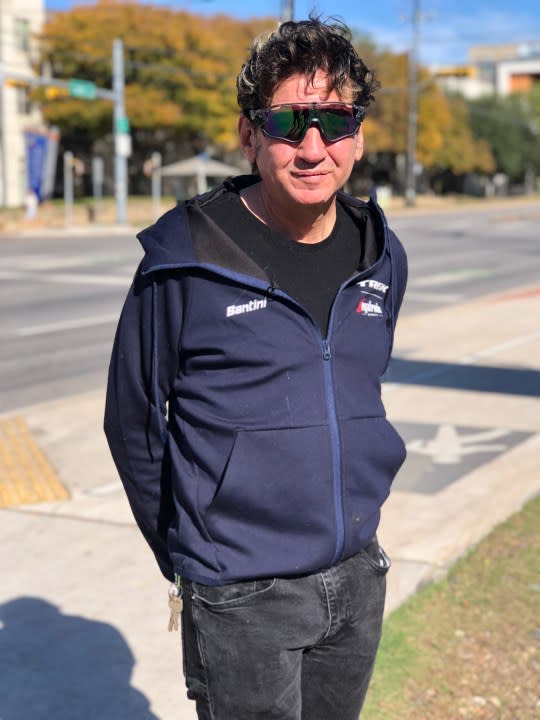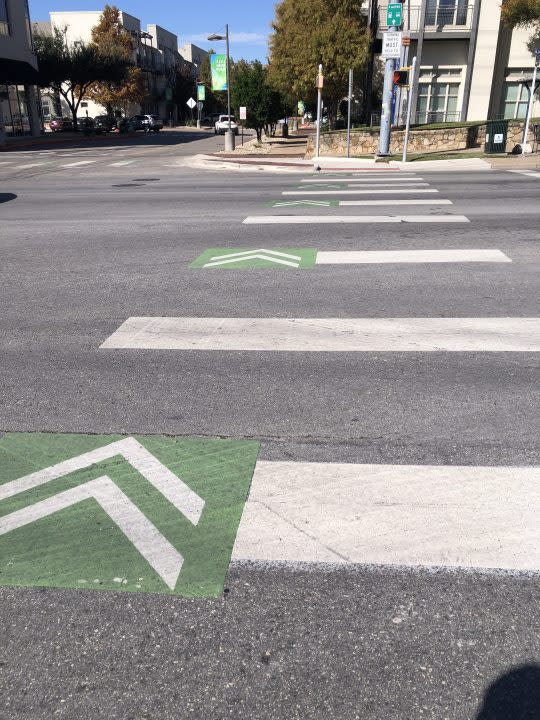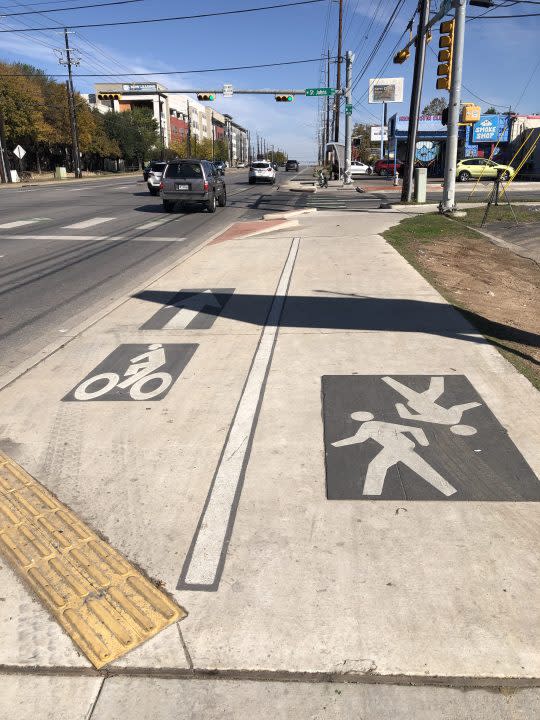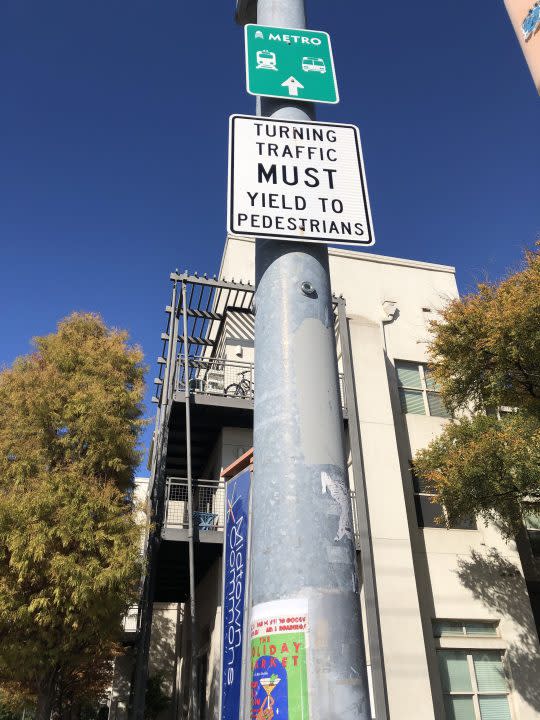Bicyclist hit by car proves case after insurance fight; shares lesson for others

AUSTIN (KXAN) — Michael Passman looks over the intersection at North Lamar Lamar Boulevard and St Johns Avenue.

It’s a busy December morning as cyclists and pedestrians cross. The intersection is marked with a crosswalk and green-backed chevron which the City of Austin explained is used when bicycles and pedestrians share the same path.
Passman — who rides more than 100 miles a week — is familiar with the markings.
In mid-October, Passman said he was riding his bicycle westbound on St Johns and had stopped at the intersection. He said when the light turned green, he proceeded to cross in the bike path and was hit by a car making a right turn.
“I was shaken up and angry and livid,” Passman said.
His front and rear camera captured the crash. He added that his bike was damaged.
Insurance claim limbo
Passman filed a claim with the driver’s insurance company, but he said it took weeks to sort it all out. He shared his videos, explained the markings on the road and pointed out a sign posted which reads, “Turning Traffic Must Yield to Pedestrians.”

The city explained to KXAN investigators that the green-backed chevron shows a person on a bike or a scooter the preferred path of travel and indicates to people driving they can expect to see people bicycling and riding scooters. The markings are retroreflective, which means the colors and symbol reflect from drivers’ headlights.
“About probably two-tenths of a mile back the bike lane is in the roadway, and then it merges onto the sidewalk and the bike lane is actually marked on the sidewalks. So that’s the shared use path,” Passman said.
He said after all the evidence he provided — the insurance company denied his claim.
“The adjuster originally said that I was at fault because I wasn’t in the roadway,” Passman said.
He explained he had been without his only form of transportation for weeks and appealed. About a month later, the insurance company approved the claim.
Farmers Insurance Group, the driver’s insurance, wrote in an email: “After a thorough review of the facts of this incident, we have paid for property damage arising from the accident involving our customer.”
‘Prompt, fair and equitable’ settlements
The Texas Department of Insurance explained the state insurance code requires insurance companies to attempt in good faith to make “prompt, fair and equitable” claim settlements.

“If you think the company you’re dealing with is not treating you fairly you can make a complaint with TDI and we can ask the insurance company for details on the claim’s status. We have an online complaint portal and you can call the TDI help line if you have questions. 800-252-3439,” TDI spokesperson Ben Gonzalez said.
He added that some insurance companies offer policies specifically for bicycles.
“If you’re a regular bicycle commuter, you should ask your insurance agent or company about a policy that will cover you for any accidents you cause, and ask whether your health insurance will cover injuries you sustain in a crash,” Gonzalez said.
Passman adds that he felt he did not need immediate medical treatment at the time of the crash but did file an injury claim with the insurance company. He said he’s been checked out by a doctor after a few concerns and recently had an MRI. He explained he’s still waiting on results.
The Insurance Information Institute, an industry association, pointed out that bicycles are covered under standard homeowners and renters insurance policies under personal property. Those policies also provide liability protection for harm you may cause to someone else or their property.
Lisa Torry Smith Act
“The front end was destroyed. And it’s a carbon frame,” Passman said. “They settled the damage claim obviously, for less than I wanted, and I am in the process of replacing it.”

Austin police did get called to the crash and said it did not cite the driver, but Passman is pushing for an investigation.
He wants APD to look at state law passed in 2021 which could include penalties for a driver who causes bodily injury to a pedestrian or cyclist. The Lisa Torry Smith Act states drivers could face charges from a Class A misdemeanor to a state jail felony.
He said he had to be his own advocate — a lesson he hopes helps other bicyclists.
“It helps if you have front and rear-view cameras,” Passman said. “If I use this intersection, again, I’m taking the roadway.”
The city explained that there are two other locations with this type of marking — Barton Springs Road near the Palmer Event Center and Escarpment Boulevard and La Crosse Avenue.
“As the City works to build out its All Ages and Abilities Bicycle Network, these markings will continue to be used in areas such as major intersections and driveways where bicycle and motor vehicle paths cross,” explained a City of Austin spokesperson.
For the latest news, weather, sports, and streaming video, head to KXAN Austin.

